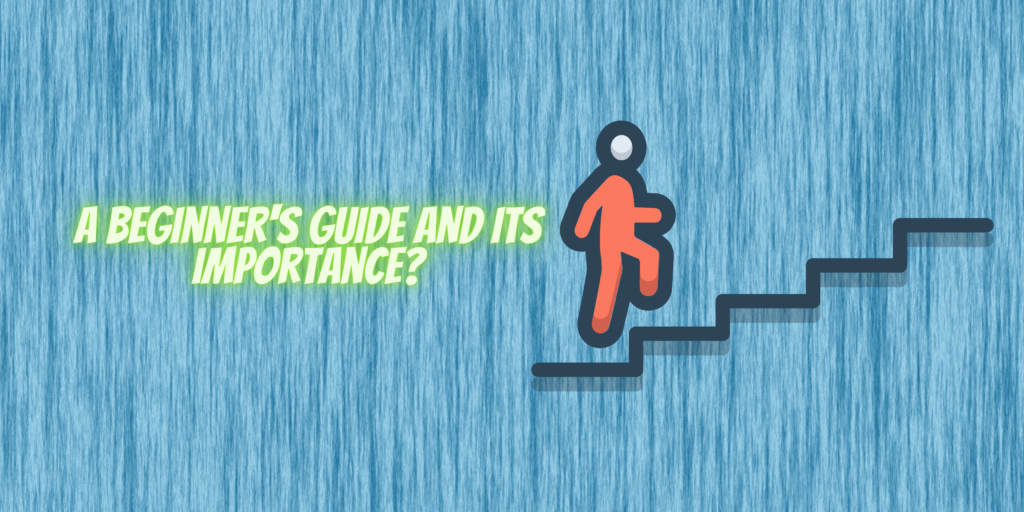If you love something, you must pursue it, whether it is a dream, a place, a person, or a profession. But pursuing something without knowledge is ruining it even before the start. The beginning of anything new always requires guidance. The people who have excelled in the field are your best guide.
This article will give you the ultimate guide for writing several technical contents along with a free template! We will help you prepare your best content, podcast and everything that requires an expert’s helping hand.
What is a Beginner Guide?
It is a well-researched guide built for the people who have just begun their journey in a new skill or an art. It helps you to start your journey, move forward and excel. For example, when you purchase a new phone, it contains a small booklet. The booklet has instructions written briefly and sequentially. Those steps to do are generally the beginner guide for you for your new phone. Similarly, while writing content, the beginner guide helps you to write any content given to you.
“Explain to me, like I am a five-year-old boy” yes, it is all about the Beginner guide. It is generally informative. Hence, it is long-form content, in-depth written and usually ranked high on google.
How to Build a Beginner guide?
Put an appealing title
The title should be self-explanatory. It must explain the purpose of writing that article. The easiest way to do this is using the “beginning” of the title. For example, “the beginner guide for painting”.
Usage of simple and informative words in the introduction
Anyone coming to read the beginner guide for any skill is a newbie and needs a lot of encouragement and a bunch of simple words to understand. The whole write-up should also be simple and catchy. use these key points to write your beginner guide :
- Simple language. Use simple and basic words in your beginner guide. Generally, the beginner who comes searching for learning something sees the difficult words, skip the blog or leave.
- Encourage the reader. Encouraging a learner is the best thing you can do for them. Your introductory paragraph should be optimistic enough to keep the readers sticking to your blog long.
- Show the outcomes. Mention the advantages of reading your write-up. Keep them engaged throughout the blog. Write the benefits they would be getting after reading this write-up.
- Cover every point possible in a blog post. Try to cover every common question in the learner’s mind. Use subtopics to explain different topics separately. Add images, graphics, screenshots, and videos wherever necessary.
Make them learn by showing examples
Descriptions and definitions are alright but do you know what strikes a mind faster than that? It is an example. As a kid, you would have seen your younger brother doing small things, which he learned by seeing mom or dad. Likewise, people learn more quickly when a similar thing is shown to them. It would be best to build your beginner guide with fewer descriptions and more examples.
Put yourself in the place of the reader
What have you searched for if you were new to this subject? What questions would you have raised? Where would you have stuck again and again?
Summary
Write the geist of your blog. Highlight all the points necessary. Explain to them how to find more such easy write-ups for their understanding.
What is the intent behind the beginner’s guide?
The search behind every beginner guide on the internet is to learn a new skill or a new accessory.
Some common modifiers usage can enhance the glory of a beginner guide,
- what
- what’s
- how
- beginner
- definition
- easy
- essential
- learn
while including these modifiers, keep in mind to make a good and sequential guide. here we have tried our beginner guide, which has the following points:
An overview


- title
- introductory part
- table of contents
- what is the topic about?
- sections/subtopics
- summing up
Ask yourself a few questions,
Will this blog be helpful for people new to this topic?
Is there any point or subtopic missed out or left uncleared?
Do the provided information helpful to be applied practically after reading it?
If you feel like you can’t answer any of these questions confidently, then try to rewrite some of the subtopics. Make some adjustments, change a few outlines of topics and make it suitable for beginners.
Pros of Beginner guide
- These kinds of posts are well written using simple language and require little or no modification further also.
- They are usually ranked high because of their length and informatory keywords.
Cons of beginner guide
- They require a lot of researching, writing, rephrasing, and editing to be ranked high on google.
- They don’t help you increase your sales or the visibility of your product page.
- Time-consuming and tiring.
Here we have penned down some basic instructions for you:
Use headings (H2/H3/H4)
Headings are made to highlight a key point. The white space between a heading and a paragraph is the breathing line. It explains that you can pause here, understand the motive of this paragraph and keep going.
Headings in beginner guide are also important because people don’t read the whole paragraph they skip it only by reading the heading. If something curious is written in the heading, they will dive straight into it. Otherwise, they will prefer skipping the long boring paragraph and moving to the next section.
text and paragraph length
As a newcomer will prefer a beginner guide, it is advisable to keep the sentence short, sweet and brief. Long texts and sentences look too clumsy and difficult to understand.
You can use subheadings to separate paragraphs. Include bullet points, numbered lists, images, graphics or relevant videos. Explain what you want to do via little things than boring long paragraphs.
Writing style or tone
Every writer has their writing style. Some people love to do it conversationally, and some want to keep it affirmative only. The style of writing also affects the learning process of beginners. Something simple and short is easily understood. But if you give a long paragraph with ten complex words, it will likely be skipped by every beginner.
Format of the article
- The introduction may contain 1-3 paragraphs with 1-5 words in each sentence.
- The header should contain the main points, which is the face of the whole article.
- The middle part can be a long informatory write-up including subheadings, bullet points, tips and tricks, do’s and don’t, and pros and cons.
- The story’s theme is always a problem-solving article used by beginners whenever they start a new skill or work.
- The conclusion must include the best part of the article and what the beginners learn from the beginner guide.
Here is a sample Beginner guide template for you. You can get all your doubts cleared from this template: Sample beginner’s guide
Summing Up
Always remember there is no hard and fast rule of following a suggested template only. You can write of your own. It’s just that people at a learning stage require the back of simple and uncomplicated things. For example, when you were a toddler, you were taught to pronounce words. You learnt the words, the sentences, and then the whole book. It is just the same as this. A beginner’s guide is a guide for newbies. Keeping it simple would be worthful.

